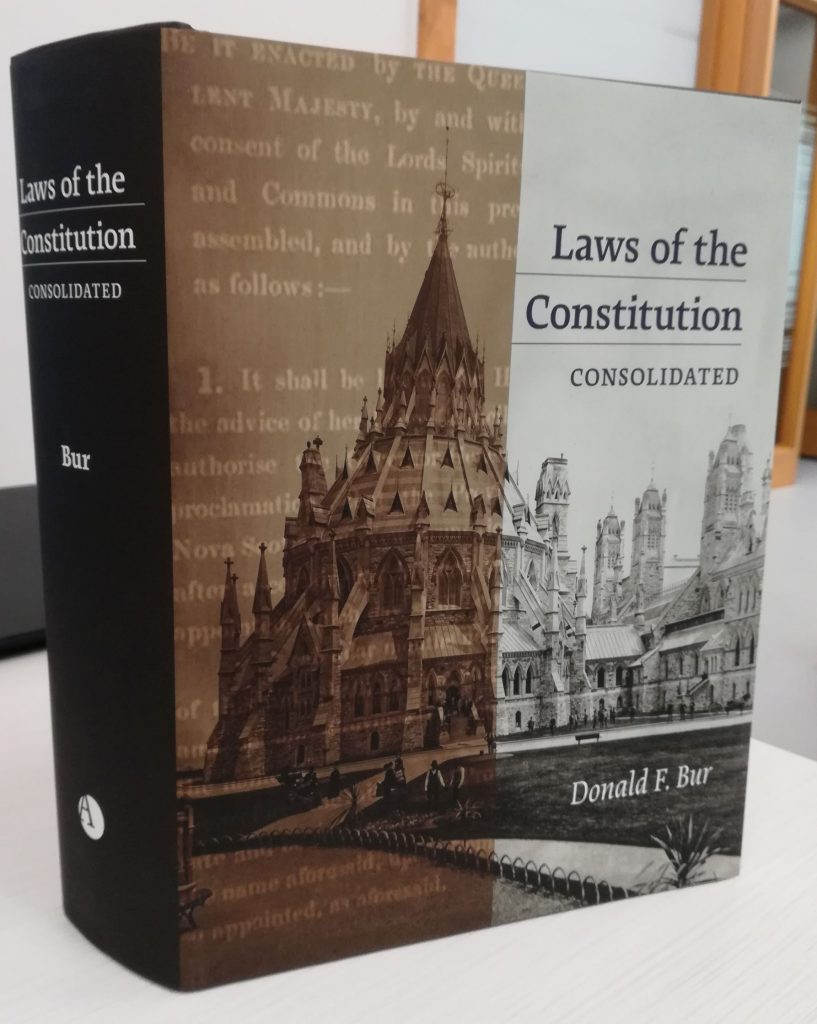“A society can be understood by the types of laws that it creates, but it can also be understood by its Constitution.”
Donald F. Bur
All law is complicated, and constitutional law is particularly complicated. As a result, most people know the Constitution of this country through two documents—the Constitution Act, 1867 and the the Constitution Act, 1982 which includes the Canadian Charter of Rights and Freedoms. However, trying to understand Canadian society through these two documents alone is like trying to understand a person by looking at two photographs in an album. Each is only a picture in time, whereas the story of Canadian society can be better told through a documentary.
Constitutions, by necessity, must be a unifying force for countries. This is not an interpretation of the origins and growth of this country, because there may be many such interpretations. This publication outlines a complicated story, as one might expect, but when everything has been collected and dissected and re-organized it becomes a much more accessible story for all Canadians.
Constitutions are unusual forms of laws. Because of their semi-permanent nature, they almost always refer to concepts that are themselves ancient. This is true even for recent constitutional changes in this country, such as the Charter of Rights and Freedoms, which refers back to concepts that originated centuries ago. A collection of constitutional laws, particularly those that come in the form of constitutional documents, must necessarily require a search into the past.
This publication pulls together documents beginning in 1627 and ending in 2020—a period of 393 years—many of which are not easily accessible. A list of these 350 constitutional documents indexes the story of this country’s Constitution in a variety of forms —international treaties, domestic treaties, Royal Proclamations, constitutional amendment proclamations, United Kingdom statutes, Canadian statutes, provincial statutes, territorial statutes, orders in council, commissions, letters patent, arbitrations and petitions. Many of the older documents contained in this collection were not readily accessible, and required the author to search archives in the UK and Canada. These documents are now being published as part of the constitution of this country for the first time.

The story of the Constitution that began almost three hundred years ago documents the beginnings and the growth of the Canadian society. The beginnings, of course, show how Crown authority was transferred from the UK to various parts of this country through Governors. The growth of representative institutions parallels the growth of the country, with the existence of transformations such as the existence and disappearance of provincial legislative councils being documented. One also sees, for perhaps the first time, not only certain agreements that were made with the First Nations but also the ease by which various governments converted their land to crown owned land. As part of this country’s DNA, compromises were made. These are evidenced both when the country was formed, and when each province joined the union. The publication also references, of course, Canada’s maturity in the adoption of a Charter of Rights and Freedoms and an amending formula.
A good historical analysis doesn’t just provide a snapshot of the past. Instead, it weaves together different concepts to tell a complete story. This publication is accordingly not just a collection of documents strewn together in a chronological order—although there is a wonderful index of each of the 350 documents listed chronologically that shows how this country’s constitution has evolved. Instead the body of the constitutional texts are organized under fourteen different categories with documents of different era, and different types, conceptually placed together.
This allows the reader to see how individual historical documents relate to the same type of document in a different time and different circumstances. And because different types of constitutional documents were used at different times, for different purposes, this consolidation allows documents of different types—international treaties, domestic treaties, Royal Proclamations, constitutional amendment proclamations, United Kingdom statutes, Canadian statutes, provincial statutes, territorial statutes, orders in council, commissions, letters patent, arbitrations and petitions—to be seen together.
In order to make the law accessible, provisions that have been expressly or impliedly repealed have been deleted from the body of the text and referenced in footnotes. Thus the publication leaves out all of the constitutional detritus that has accumulated over the years. What is left behind is our current constitution. The effort that has been made to make this determination will save an enormous amount of time and energy for those seeking to understand constitutional law.
Further, parts of the remaining constitution that belong together have been put together under fourteen headings for ease of reference. This not only allows for ease of access, but it also elevates certain parts of the constitution that have been largely ignored when those parts are placed together with parts that are much more well known.
By being exhaustive in scope, by eliminating repealed laws, and by consolidating remaining laws according to topic, this publication seeks to bridge the centuries of constitutional development to provide one constitutional statement accessible to all Canadians.
The hope is that this publication will provide the legal profession, and others, with the all of the materials that they need to fully understand constitutional law.
Thank you to Donald F. Bur for providing this guest blog post.
